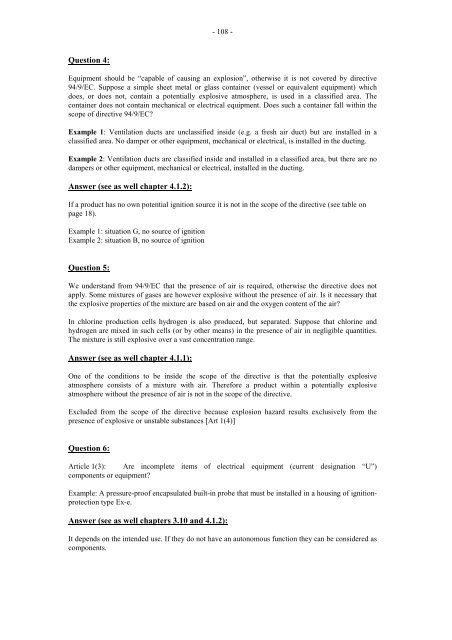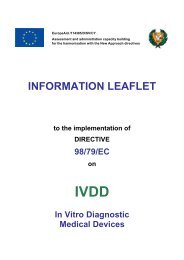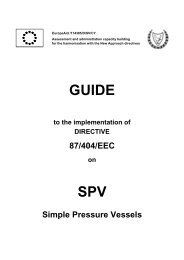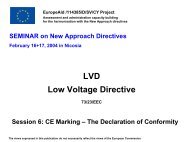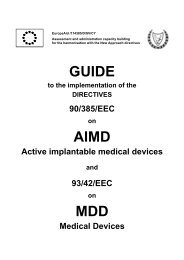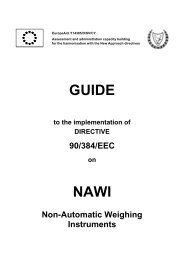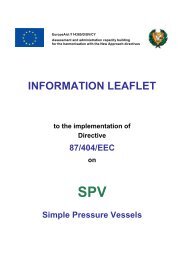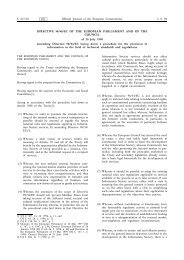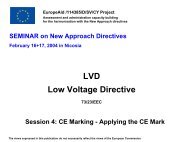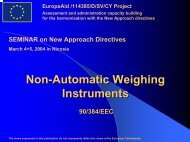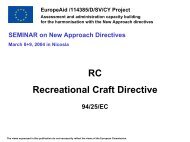Atex guidelines
Atex guidelines
Atex guidelines
You also want an ePaper? Increase the reach of your titles
YUMPU automatically turns print PDFs into web optimized ePapers that Google loves.
- 108 -Question 4:Equipment should be “capable of causing an explosion”, otherwise it is not covered by directive94/9/EC. Suppose a simple sheet metal or glass container (vessel or equivalent equipment) whichdoes, or does not, contain a potentially explosive atmosphere, is used in a classified area. Thecontainer does not contain mechanical or electrical equipment. Does such a container fall within thescope of directive 94/9/EC?Example 1: Ventilation ducts are unclassified inside (e.g. a fresh air duct) but are installed in aclassified area. No damper or other equipment, mechanical or electrical, is installed in the ducting.Example 2: Ventilation ducts are classified inside and installed in a classified area, but there are nodampers or other equipment, mechanical or electrical, installed in the ducting.Answer (see as well chapter 4.1.2):If a product has no own potential ignition source it is not in the scope of the directive (see table onpage 18).Example 1: situation G, no source of ignitionExample 2: situation B, no source of ignitionQuestion 5:We understand from 94/9/EC that the presence of air is required, otherwise the directive does notapply. Some mixtures of gases are however explosive without the presence of air. Is it necessary thatthe explosive properties of the mixture are based on air and the oxygen content of the air?In chlorine production cells hydrogen is also produced, but separated. Suppose that chlorine andhydrogen are mixed in such cells (or by other means) in the presence of air in negligible quantities.The mixture is still explosive over a vast concentration range.Answer (see as well chapter 4.1.1):One of the conditions to be inside the scope of the directive is that the potentially explosiveatmosphere consists of a mixture with air. Therefore a product within a potentially explosiveatmosphere without the presence of air is not in the scope of the directive.Excluded from the scope of the directive because explosion hazard results exclusively from thepresence of explosive or unstable substances [Art 1(4)]Question 6:Article 1(3): Are incomplete items of electrical equipment (current designation “U”)components or equipment?Example: A pressure-proof encapsulated built-in probe that must be installed in a housing of ignitionprotectiontype Ex-e.Answer (see as well chapters 3.10 and 4.1.2):It depends on the intended use. If they do not have an autonomous function they can be considered ascomponents.


